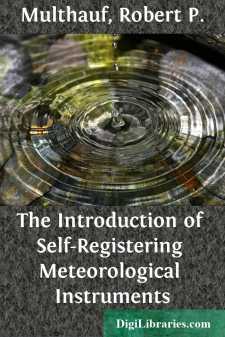Categories
- Antiques & Collectibles 13
- Architecture 36
- Art 48
- Bibles 22
- Biography & Autobiography 813
- Body, Mind & Spirit 142
- Business & Economics 28
- Children's Books 17
- Children's Fiction 14
- Computers 4
- Cooking 94
- Crafts & Hobbies 4
- Drama 346
- Education 46
- Family & Relationships 57
- Fiction 11829
- Games 19
- Gardening 17
- Health & Fitness 34
- History 1377
- House & Home 1
- Humor 147
- Juvenile Fiction 1873
- Juvenile Nonfiction 202
- Language Arts & Disciplines 88
- Law 16
- Literary Collections 686
- Literary Criticism 179
- Mathematics 13
- Medical 41
- Music 40
- Nature 179
- Non-Classifiable 1768
- Performing Arts 7
- Periodicals 1453
- Philosophy 64
- Photography 2
- Poetry 896
- Political Science 203
- Psychology 42
- Reference 154
- Religion 513
- Science 126
- Self-Help 84
- Social Science 81
- Sports & Recreation 34
- Study Aids 3
- Technology & Engineering 59
- Transportation 23
- Travel 463
- True Crime 29
The Introduction of Self-Registering Meteorological Instruments
Description:
Excerpt
The development of self-registering meteorological instruments began very shortly after that of scientific meteorological observation itself. Yet it was not until the 1860's, two centuries after the beginning of scientific observation, that the self-registering instrument became a factor in meteorology.
This time delay is attributable less to deficiencies in the techniques of instrument-making than to deficiencies in the organisation of meteorology itself. The critical factor was the establishment in the 1860's of well-financed and competently directed meteorological observatories, most of which were created as adjuncts to astronomical observatories.
The Author: Robert P. Multhauf is head curator of the department of science and technology in the United States National Museum, Smithsonian Institution.
The flowering of science in the 17th century was accompanied by an efflorescence of instrument invention as luxurious as that of science itself. Although there were foreshadowing events, this flowering seems to have owed much to Galileo, whose interest in the measurement of natural phenomena is well known, and who is himself credited with the invention of the thermometer and the hydrostatic balance, both of which he devised in connection with experimentation on specific scientific problems. Many, if not most, of the other Italian instrument inventors of the early 17th century were his disciples. Benedetto Castelli, being interested in the effect of rainfall on the level of a lake, constructed a rain gauge about 1628. Santorio, well known as a pioneer in the quantification of animal physiology, is credited with observations, about 1626, that led to the development of the hygrometer.
Both of these contemporaries were interested in Galileo's most famous invention, the thermoscope—forerunner of the thermometer—which he developed about 1597 as a method of obtaining comparisons of temperature. The utility of the instrument was immediately recognized by physicists (not by chemists, oddly enough), and much ingenuity was expended on its perfection over a 50-year period, in northern Europe as well as in Italy. The conversion of this open, air-expansion thermoscope into the modern thermometer was accomplished by the Florentine Accademia del Cimento about 1660.
Figure 1.—A set of typical Smithsonian meteorological instruments as recommended in instructions to observers issued by the Institution in the 1850's. Top (from left): maximum-minimum thermometer of Professor Phillips, dry-bulb and wet-bulb thermometers, and mercurial barometer by Green of New York. Lower left: rain gauge. The wet-bulb thermometer, although typical, is actually a later instrument. The rain gauge is a replica.
Galileo also inspired the barometer, through his speculations on the vacuum, which, in 1643, led his disciple Torricelli to experiments proving the limitation to nature's horror of a vacuum. Torricelli's apparatus, unlike Galileo's thermoscope, represented the barometer in essentially its classical form. In his earliest experiments, Torricelli observed that the air tended to become "thicker and thinner"; as a consequence, we find the barometer in use (with the thermometer) for meteorological observation as early as 1649.
The meetings of the Accademia terminated in 1667, but the 5-year-old Royal Society of London had already become as fruitful a source of new instruments, largely through the abilities of its demonstrator, Robert Hooke, whose task it was to entertain and instruct the members with experiments....




